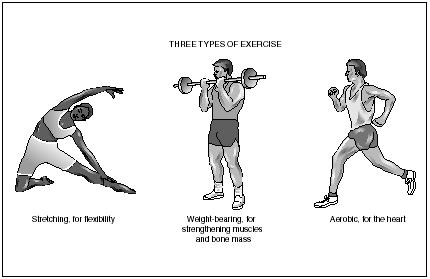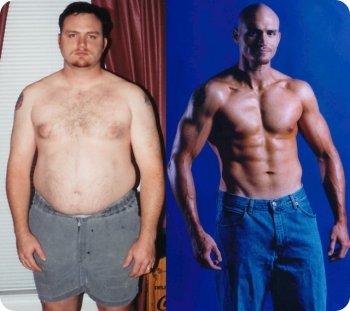Six Weight Loss Tricks
The most basic approach to weight loss is to burn more calories than you take in, but sometimes no matter what you do it just does not seem to be working. When you need an ace up your sleeve for a critical moment, try one of these tricks to jump-start your weight loss.

1.)Add weights to your routine.

Adding weight-lifting to your routine is one of the fastest ways to see results. Your body will respond almost immediately, shaping and toning muscle, and remember, the more muscle you have, the more fats you burn! To determine the weight you should start with, grab a 5-lb. dumbbell and do as many bicep curls as possible. If you can do more than ten reps comfortably, use a higher weight. On the other hand, if you can’t do more than eight repetitions without strain, try using a 3-lb. weight instead. For those of you already training with weights, go up to the next highest weight to see results. If you don’t have weights at your home, it is highly recommended that you invest in a set that ranges from three to ten pounds. These usually cost less than $30 and are well worth the investment. 
2.)Increase the intensity.

During your cardio workout routine, assess the intensity level to determine how hard you’re working. If you can carry on a conversation with ease while exercising, it’s time to boost the intensity. You can do that by taking deeper strides as you move and placing a greater demand on the muscles of the thighs and buttocks, which in turns burns more calories. The best way to gauge the intensity of a workout is to pretend to carry on a conversation. You should be able to speak in short sentences with a breath after each one. Never exercise to the point where you cannot talk.

3.)Shake up your routine.

Despite being called a routine, your exercise program should keep you interested. Add different activities for variety and you not only maintain your concentration but also constantly challenge your body to meet new obstacles and developing more than just a few muscles. More muscles equal a greater calorie burn – what’s not to love? Try new activities that keep your mind engaged and experience an extra boost for your brain!

4.)Give your diet a makeover.

The daily diet is most frequently the worst problem area when you’re trying to lose weight. Between home and work and the responsibilities that come with each, it can be almost impossible to find healthy choices at the last minute. Spare yourself the daily scrounging and stock up on healthy foods that can be ready at a moment’s notice. Make a point to stash some of your good-for-you snacks at work so that when the mid-afternoon cravings hit, you have something satisfying and diet-friendly.

5.)Challenge yourself.

Set personal goals for yourself and don’t forget to reward your accomplishment! If your goal is to be more active at work, buy a pedometer and challenge yourself to take 6,000 steps during your workday. Be creative about it: walk to a colleague’s desk rather than email, take the stairs instead of the elevator, and go to the bathroom three floors down instead of the one on your floor. Challenging yourself can be very fulfilling on a personal level when you achieve your goals, and can encourage you on to greater achievement.

6.)Keep a food journal.

Tne of the most common characteristics of successful dieters is keeping a daily journal of food intake. There’s no real mystery about this: when you must write down everything that goes in your mouth, it forces you to realize exactly how many calories you consume. Keeping a journal is also beneficial because you can pick up patterns in your eating – for instance, if you become ravenous at a certain time everyday or if your meals and snacks are too far apart. It can also be helpful to note your frame of mind when you eat or mention the circumstances. Binging as soon as you get home from work could indicate a stressful job or it could mean it’s just been too long since lunch. A basic food journal requires you to enter the food you ate, number of calories, amount of fat, and how much you consumed. This can be expanded as much as necessary to meet individual needs. Just make sure you review it every few days to spot any habits that need to be brought under control.





